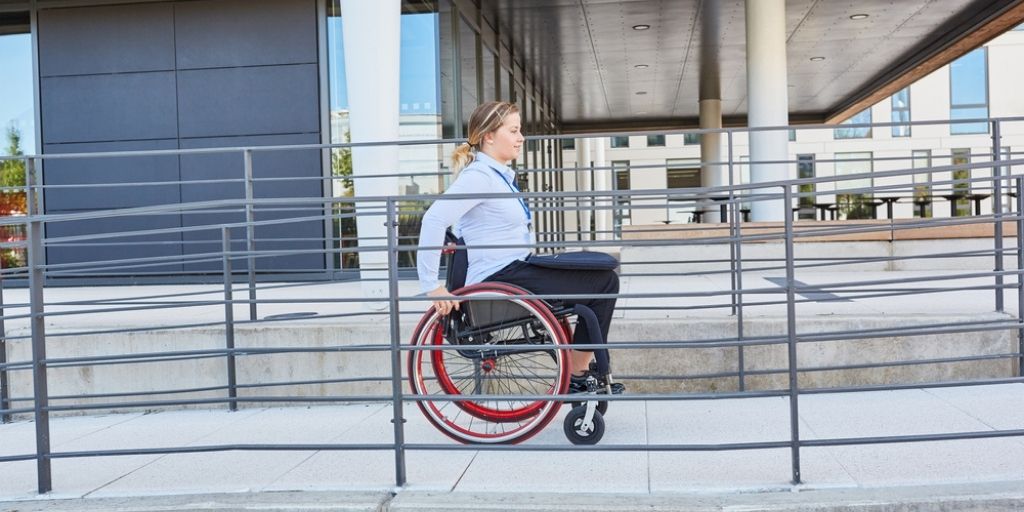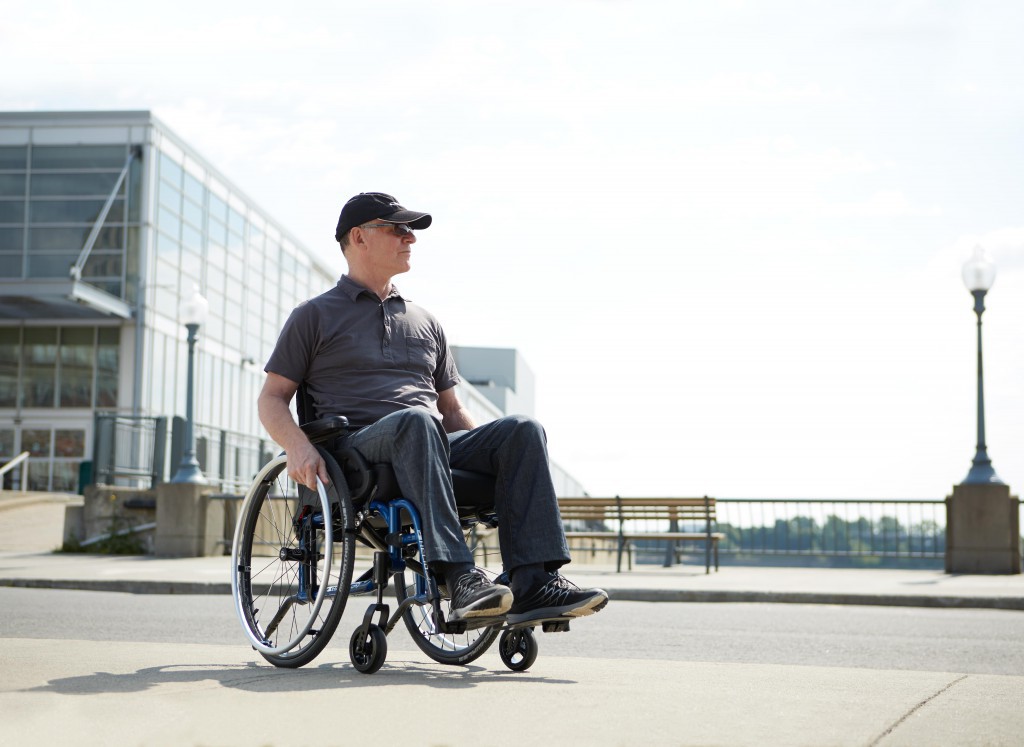Imagine trying to navigate the world around you without the proper tools to support your mobility. It’s a daunting and frustrating task that many people with disabilities face on a daily basis. One of the most essential tools for individuals who rely on a wheelchair for their mobility is a properly fitted wheelchair.
A wheelchair that fits well not only provides comfort but also enhances the user’s independence and ability to participate in everyday activities.
In this post, we’ll explore the importance of a proper wheelchair fit and the impact it can have on an individual’s quality of life.
What are the benefits of a properly fitting wheelchair?
Enhanced Mobility
Wheelchairs offer the freedom to move around as desired, whether independently or with the assistance of a caregiver. They allow for a more active and comfortable lifestyle, enabling individuals to participate in daily activities with ease.
Independence
For many individuals, particularly seniors, feeling unbalanced when walking can lead to a sedentary and isolated lifestyle. A properly fitted wheelchair can help restore their independence, allowing them to enjoy hobbies and activities they previously avoided due to mobility issues.
Injury prevention
Wheelchairs can help prevent injuries related to balance and instability, particularly for those at risk of falls. The proper fitting can also prevent medical issues such as pressure wounds and blood clots.
Comfort
The perfect wheelchair fit provides comfortable seating and back support, improving posture and reducing discomfort. It can also improve breathing and swallowing, leading to a better overall quality of life.
What are the different types of wheelchairs?
There are two types of wheelchairs – manual or electric. A manual wheelchair is much lighter than an electric one, however, requires physical force to move. An electric wheelchair on the other hand is heavier but has a motor to propel it forward.
Which is the right wheelchair?
There is no right or wrong wheelchair. The one an individual has depends on their situation. Wheelchair users should work together with healthcare professionals to determine the best one for their lifestyle.
Some questions the user can ask are:
- Where will the wheelchair be used the most?
- Will the wheelchair be used every day or just occasionally?
- What types of activity will the wheelchair be used for?
- What features are important for a wheelchair to have?
Once these questions have been asked, you can then begin to consider options and look at the desired fit of a wheelchair.

The 7 Key Measurements to Determine Proper Wheelchair Fit – Wound Care Solutions
When it comes to wheelchair fit, there are a variety of factors to consider, including the individual’s weight, height, and level of mobility. However, there are 7 key measurements that are critical to determining how a wheelchair fits.
These measurements are essential not only for ensuring comfort, but also for preventing the development of pressure sores and other skin injuries.
Seat Width
Did you know that the width of a wheelchair user’s seat is crucial for a properly fitted chair? It may seem like a minor detail, but the right seat width can make all the difference in a user’s comfort and safety.
A seat that’s too narrow can cause pressure ulcers, leading to painful sores and skin injuries whereas a seat that’s too wide can cause the user to slide forward, which can increase the risk of accidents.
When measuring for a wheelchair, healthcare professionals take into account an individual’s hip width and overall body shape. The right fit should fit closely and individuals should be able to run their fingers down the gap without them being pinched.
Seat Depth
Seat depth is another key measurement that healthcare professionals take into account when undertaking wheelchair fitting. A seat that is too shallow can cause the user to slide forward, which can lead to poor posture and discomfort. A seat that is too deep can cause pressure points and increase the risk of skin injuries.
The ideal seat depth should allow the user’s hips to rest back in the chair while leaving a couple of inches between the back of their knees and the front of the seat.
Some individuals may require extra support in the form of a backrest or seat insert to ensure postural support and comfort.
Seat Height
Seat height is another important measurement when it comes to finding the right fit. A seat that is too high or too low can cause discomfort, poor posture, and even increase the risk of falls or accidents.
The ideal sitting position should allow the wheelchair users feet to rest flat on the ground, while their knees are bent at a comfortable angle. For individuals that require extra support, such as those with limited lower body movement or amputations, elevating the seat height can help improve their ability to transfer in and out of the wheelchair safely.
Additionally, an adjustable seat height can allow the user to vary their position throughout the day, reducing the risk of pressure injuries and improving overall comfort.
Armrest height
The right arm support height can make all the difference to a user’s comfort and mobility. Arm supports that are too high can cause the user’s shoulders to hunch up, leading to neck and shoulder pain. On the other hand, arm supports that are too low can cause the user to slouch, which can lead to poor posture and discomfort.
The ideal arm support height should allow the user’s elbows to rest comfortably at a right angle while their hands rest on the armrests. This positioning can help reduce fatigue and strain in the upper body and improve the user’s ability to manoeuvre the wheelchair.
Leg Rest length and footplate height
Leg rest length and footplate height are two important measurements that healthcare professionals consider when fitting a wheelchair user with a new wheelchair. The length of the leg rest should allow for the user’s knees to be slightly bent while their feet rest comfortably on the footplate.
If the leg rests are too long, it can cause the user’s feet to hang off the footplate, leading to discomfort and poor blood flow to the legs. If the leg rests are too short, it can cause the user’s knees to become uncomfortably bent, leading to pressure and skin injuries.
The footplate height should allow the user’s feet to rest comfortably and securely, providing proper support and stability.
Backrest height
The height of the backrest can affect a user’s posture, comfort and overall mobility. A backrest that’s too high can cause discomfort in the neck and upper back, while a backrest that’s too low can lead to poor posture and lower back pain.
The ideal height of the backrest should allow for the user’s shoulder blades to rest comfortably against the backrest providing adequate support for the head and neck. Additionally, adjustable backrest height can allow the user to vary their position throughout the day, reducing the risk of pressure injuries and improving overall comfort. Properly fitted backrest height can also improve the user’s ability to manoeuvre and propel the wheelchair, leading to greater mobility and independence.
Weight
Body weight is a crucial factor to consider when selecting a wheelchair. The weight of the user can affect the wheelchair’s stability, manoeuvrability, and overall durability.
Choosing a wheelchair with an appropriate weight capacity is essential to ensure safety and prevent damage to the chair. Overloading a wheelchair can cause it to break down, leading to injury or requiring expensive repairs.
Additionally, individuals with higher body weight may require a wheelchair with greater support and stability to prevent discomfort or pressure injuries. It is important to consider the user’s weight when selecting a wheelchair to ensure proper fit, comfort, and safety. By selecting a wheelchair that accommodates the user’s weight and physical needs, individuals can enjoy greater mobility, independence, and an overall improved quality of life.


